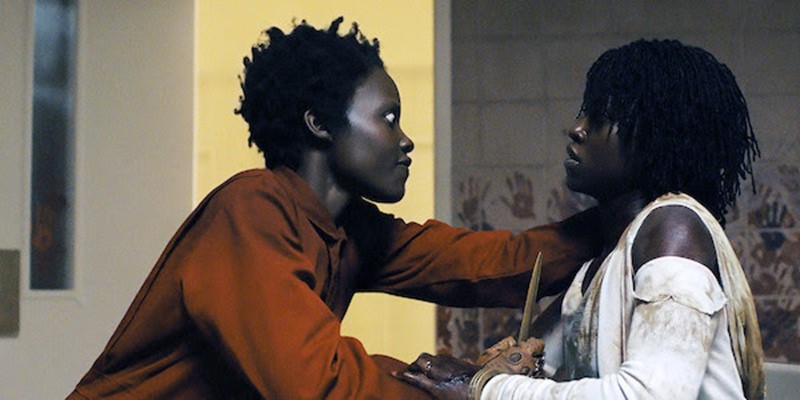
Washington, D.C., March 27 – Playing two roles in Jordan Peele’s new horror film, Us, Lupita Nyong’o used a disability to create the “creepy voice” for Adelaide Wilson’s doppelgänger.
“I was inspired by the condition spasmodic dysphonia,” Nyong’o said in an interview with Variety. “It creates this spasming in your vocal chords that leads to an irregular flow of air.”
RespectAbility, a national nonprofit organization fighting stigmas and advancing opportunities for people with disabilities, recognizes it is important to spread the word about different disabilities and conditions. However, said its president, Jennifer Laszlo Mizrahi, “connecting disabilities to characters who are evil further marginalizes people with disabilities who also have significant abilities and want to contribute to their communities just like anyone else.”
Demonizing Disability
The issue at hand is that in order to intentionally achieve a creepy effect, the creative choice was to make the character have a disability – and demonizing the disability. According to a report published today by the Ford Foundation, the overwhelming portrayal of people with disabilities in film is negative, including as the villain.
In most cases – Darth Vader in Star Wars, The Joker in The Dark Knight, Voldemort in the Harry Pottermovies, Dr. Poison in Wonder Woman– the issue is how the person looks.
“This stereotype plays on people’s inherent discomfort with those who do not look the same as them, telling them that disfigurement—and disability, in general—makes characters revolting and morally wrong and reinforcing the notion that “we should be afraid of people whose faces and bodies are different from our own.”
In the case of Us, it is how the character sounds.
Margot Durkin, a woman who lives with spasmodic dysphonia, tweeted: “I am greatly concerned that our condition has been demonized. Now in the public eye, we are ‘creepy’ sound like we have ‘swallowed a cheese grater.’ Our voice is that of a monster. I believe this mocks our disability, should be strongly condemned.”
“One of the toughest parts of having a disability is that people make assumptions based on the way you walk, talk or act, sometimes with little understanding of what is causing it,” the National Spasmodic Dysphonia Association (NSDA), said in a statement. “What is difficult for us, and for the thousands of people living with spasmodic dysphonia, is this association to their voice with what might be considered haunting, wilted or a result of emotional trauma especially since spasmodic dysphonia is a neurological disorder. We applaud the work of Ms. Nyong’o and this opportunity to educate about this rare voice condition, but for the Spasmodic Dysphonia community, this disorder does not end when the movie is over.”
Nyong’o said her inspiration came from Robert F. Kennedy Jr.’s “scratchy” voice. Kennedy has spasmodic dysphonia, which causes “involuntary spasms in the tiny muscles of the larynx cause the voice to break up, or sound strained, tight, strangled, breathy, or whispery.” According to the NSDA approximately 50,000 people in North America have spasmodic dysphonia.
Kim Kuman, executive director of the NSDA, cautions that spasmodic dysphonia “is not a creepy voice; it’s not a scary voice. It’s a disability that people are living with and shouldn’t be judged upon.”
In the Variety interview, Nyong’o said that spasmodic dysphonia may result from trauma – and her character Adelaide had childhood trauma. Yet Kuman added that is inaccurate. “For so long, people were told that it’s psychological — and it’s not. It’s neurological.”
Nyong’o worked with an ear, nose and throat doctor, a vocalist and her dialect coach to perfect the voice and to “do it safely.”
“I couldn’t afford to damage my voice,” she added.
In order for her to not have pain and prevent herself from scratching her throat more than a few times, Nyong’o adapted the disability to suit her better. “It’s inspired by the condition but not an exact replica of the condition,” she said. An individual with spasmodic dysphonia would not have that option.
Oscar chatter for Nyong’o performing both roles so well already is occurring. In 2017 IndieWire conducted a study identifying 59 actors who earned Oscar nominations for portraying characters with disabilities. In addition, author Anne Thompson found that “an Oscar-nominated actor in a physically or emotionally afflicted role has nearly a 50 percent shot of a win.”
Nyong’o is an extremely talented actress who is capable of earning an Oscar without using a disability in such a negative way.
Ensuring Accurate Portrayals
With Hollywood striving to boost diversity and inclusion, many storytellers want to do the right thing but often make glaring, yet easy to avoid, errors when it comes to portraying people with disabilities. The Hollywood Disability Inclusion Toolkit, a free resource for entertainment professionals who wish to ensure they are as inclusive of people with disabilities as possible, is available to assist with this. Sections include examples of best practices, terminology tips and etiquette, in addition to a lengthy resources section linking out to more than 100 disability organizations working in and out of Hollywood.
RespectAbility Inclusionist Tatiana Lee has been working on the inclusion of African Americans with disabilities within Hollywood. “As an African American actress who was born with Spina Bifida, the film Us is a great win for the black community and women,” she said. “I have much respect for Lupita and Jordan’s artistry. However, I hope this becomes a learning lesson for them to ensure more accurate portrayals of African Americans with disabilities.”
Media representation has powerful effects. By making a conscious effort to portray people with disabilities accurately – and not in such a negative way, Hollywood can make a difference for the 56 million Americans with a disability.


